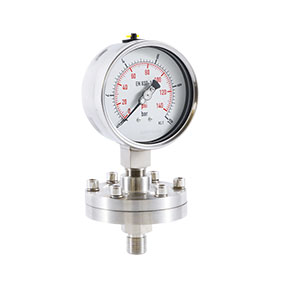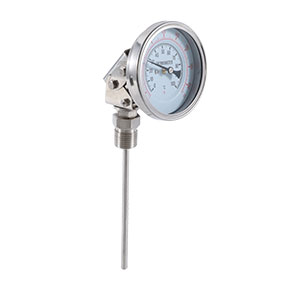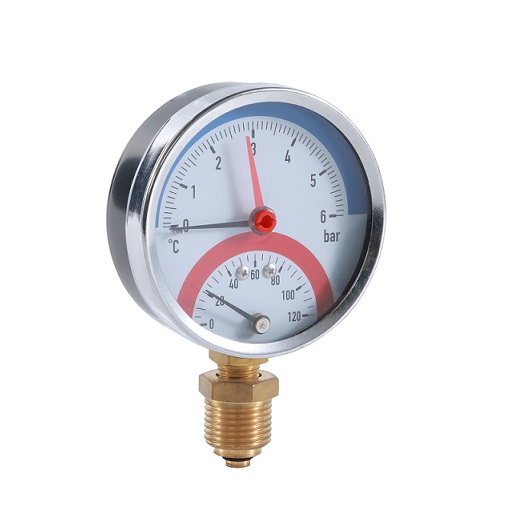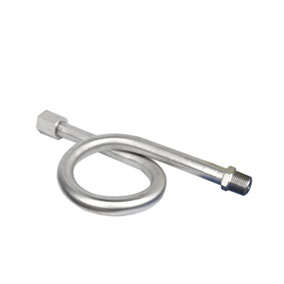Oil Filled Pressure Gauges: An Essential Tool for Precision Measurement
What is an Oil Filled Pressure Gauge?
An oil filled pressure gauge is a precise instrument that utilizes a sealed chamber filled with oil to measure fluid pressure. The gauge's internal mechanism consists of a pressure-sensitive diaphragm or piston that responds to changes in fluid pressure. The oil filling dampens vibrations and pulsations, resulting in a smooth, accurate reading.
Applications of Oil Filled Pressure Gauges
These versatile gauges are widely employed in diverse industries where precise pressure measurements are crucial. Some notable applications include:
* Hydraulic systems
* Pneumatic systems
* Chemical processing equipment
* Petrochemical plants
* Power generation facilities
Benefits of Using Oil Filled Pressure Gauges
*Accuracy: Oil filling eliminates vibrations and pulsations, ensuring accurate readings.
*Durability: The sealed enclosure protects the gauge from harsh environments, ensuring longevity.
*Temperature resistance: Oil filling acts as a temperature stabilizer, allowing for use in extreme temperature ranges.
*Corrosion resistance: Corrosion-resistant materials used in construction prevent rust and damage.
*Dampening: Oil filling effectively dampens pressure fluctuations, providing a steady reading.
Types of Oil Filled Pressure Gauges
*Diaphragm Type: Diaphragm gauges employ a flexible diaphragm to sense pressure, suitable for pulsating or fluctuating pressures.
*Piston Type: Piston gauges consist of a precise piston that responds to pressure changes, offering high accuracy and performance.
*Bourdon Tube Type: Bourdon tube gauges use a curved tube to detect pressure deviations, known for their durability and wide pressure ranges.
How to Choose the Right Oil Filled Pressure Gauge
Selecting the appropriate oil filled pressure gauge requires considering several factors:
*Pressure Range: Choose a gauge that accommodates the expected pressure range.
*Accuracy: Higher accuracy is required for critical applications.
*Mounting Type: Select gauges with suitable mounting options for your specific application.
*Materials: Consider the compatibility of materials with the fluid being measured.
*Temperature Range: Choose gauges designed to withstand the operating temperature range.
Step-by-Step Guide to Using an Oil Filled Pressure Gauge
1.Prepare the gauge: Verify that the gauge is clean and free of debris.
2.Establish a connection: Connect the gauge to the pressurized system, ensuring a proper seal.
3.Apply pressure: Slowly apply pressure to the system while observing the gauge reading.
4.Record the reading: Once the desired pressure is reached, record the gauge reading accurately.
5.Release pressure: Gradually relieve the pressure from the system after completing measurements.
Troubleshooting Oil Filled Pressure Gauges
* Erratic readings: Check for loose connections or improper installation.
* Stuck needle: Replace the gauge or contact a qualified technician.
* Rupture of diaphragm or piston: Replace the affected component immediately.
* Oil leaks: Address any oil leakage promptly to prevent further damage.
* Incorrect pressure reading: Recalibrate or replace the gauge as needed.
Industry Statistics and Market Outlook
* The global market for pressure gauges is estimated to reach $10 billion by 2025.
* Oil filled pressure gauges account for approximately 25% of the total pressure gauge market.
* The increasing adoption of automation and IoT technologies is driving the demand for oil filled pressure gauges.
Conclusion
Oil-filled pressure gauges are pressure instruments that can reliably and accurately measure even in demanding applications. Their versatile design, durability, and precision make them indispensable tools across a wide range of industries. By understanding the types, applications, and usage guidelines of oil-filled pressure gauges, technicians and engineers can effectively monitor and control fluid pressure systems.




